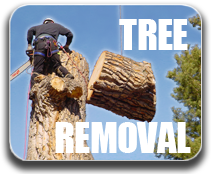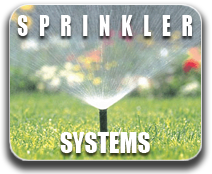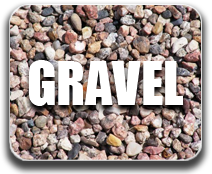All Valley Landscaping: Crafting Beautiful, Sustainable Landscapes in Phoenix
September 8, 2025In the heart of the Arizona desert, maintaining a lush yard or outdoor space might seem like a challenge. Phoenix’s heat, limited rainfall, and dry soil offer tough conditions for most plants. But for All Valley Landscaping, these aren’t just challenges—they’re the foundation for offering superior service. With smart choices in plants, design, and maintenance, your landscape can be both stunning and sustainable.

This article explores what makes landscaping work well in Phoenix, sample plant species that thrive, design and operational best practices, and why All Valley Landscaping is positioned to help homeowners and property managers turn their outdoor space into a resilient, beautiful asset.
Understanding the Landscape: Phoenix’s Climate & Environment
Phoenix’s climate is arid desert: extremely hot summers, intense sunlight, very limited rainfall, low humidity for much of the year, and often stressed soil conditions. Gardening here means working with the environment—not against it.
Some of the important environmental factors to take into account:
- Water scarcity and restrictions: Many areas in Phoenix have limits on how much outdoor watering is allowed, especially during summer. Efficient irrigation systems and low‑water plantings aren’t just nice to have—they’re essential.
- Extreme temperatures: Daytime heat above 100°F (38°C) is common in summer, and even though deserts cool a lot at night, plants undergo stress from heat consistently. Shade, sun exposure, and soil moisture play big roles.
- Seasonal monsoons and flash rainfall: When rain comes, it tends to come all at once. Proper drainage, soil preparation, and design that diverts and makes use of runoff are factors.
- Soil types and ground heat: Many soils in Phoenix are sandy, rocky, fast draining, and may have poor organic content. That means mulch, soil amendment, and careful plant selection are essential. Also, ground surfaces (gravel, rock, hardscape) radiate heat, influencing plant microclimates.
Given all this, the plants and designs that succeed are those that are drought‑tolerant, heat‑adapted, and aesthetically pleasing.
Plant Choices for Phoenix Landscapes
All Valley Landscaping’s strength lies partly in choosing the right plants. Below is a table of several excellent options: native or well‑adapted plants, their key traits, and considerations for use. Use this to plan what fits in different parts of a property—shade, sun, focal points, borders, etc.
| Plant Name | Type / Habit | Height & Spread | Light Requirement | Water Needs (once established) | Notes / Highlights |
|---|---|---|---|---|---|
| Palo Verde (Parkinsonia spp.) | Tree | 15‑30 ft tall, similar spread | Full sun | Low | Iconic yellow‑flowering native, excellent shade tree, tolerates heat and poor soil. |
| Lantana | Shrub / Ground cover | 1‑3 ft high, spreads as ground cover | Full sun, reflected heat | Low | Very colorful flowers, attracts pollinators, blooms for long periods. |
| Golden Barrel Cactus | Succulent / Cactus | Usually under 2‑3 ft wide when young, spherical | Full sun | Very Low | Striking accent plant, very low maintenance. |
| Bougainvillea | Vine / Shrub | Can climb or be trained, up to 10‑15 ft in vine form | Full sun | Moderate when establishing, low later | Long blooming, vivid color, needs support if climbing. |
| Brittlebush (Encelia farinosa) | Shrub | 2‑5 ft spread and height | Full sun | Very Low | Silver foliage, bright yellow blooms, very desert‑look feel; blooms in winter‑spring. |
| Desert Christmas Lily | Perennial / Bulb | 1‑4 ft tall | Sun to partial shade | Low to moderate during bloom time | Beautiful white flowers, seasonal interest. (You had listed this; aligns well.) |
| Indian Paintbrush | Wildflower / Annual or Perennial | 6‑16 in tall | Full sun to part shade | Low | Red flowers, great for accents, borders. |
Design Principles & Landscape Strategies
Knowing which plants to use is just one piece. How you place them, how soil is prepared, how water is delivered, and how the overall layout works together are just as important. Here are best practices All Valley Landscaping follows and recommends:
1. Hydrozoning
Group plants with similar water needs together. For example, plants like Palo Verde, Golden Barrel, and Brittlebush (very low water) might be in one zone; while plants like Bougainvillea and flowering perennials (which may need a bit more moisture) could be in another. This allows efficient irrigation scheduling.
2. Efficient Irrigation
- Use drip irrigation or soaker hoses rather than overhead sprinklers. That reduces evaporation and delivers water directly to roots.
- Water early in the morning to minimize evaporation losses.
- Regularly check for leaks, misdirects, or overspray.
- Adjust irrigation based on seasons: less in cooler months, more carefully timed in hotter ones.
3. Soil Preparation & Mulching
- Amend soils to improve water retention: adding organic matter (compost, well‑rotted material) helps sandy soils retain moisture.
- Mulch heavily—organic mulches help with moisture retention, cooling soil, suppressing weeds. Gravel or rock mulches are often used in desert landscaping but are less effective for moisture retention—though they help reduce weed growth and are visually consistent with desert themes.
4. Use of Hardscape & Shade
- Hardscape (stone, gravel, walkways, patios) reduces areas that need water, provides structure, and can be visually appealing.
- Shade structures or shade trees can reduce heat stress on plants and increase usability of outdoor space.
- Reflective surfaces and color of pavement/hard surfaces matter; lighter colors help reduce ground heating.
5. Planting & Maintenance Timing
- Plant in cooler times (early spring or autumn) so that plants can establish roots before the most intense heat.
- Avoid pruning in extreme heat; prune earlier or later.
- Plan seasonal maintenance (clean‑ups, trimming, tree care) around weather to protect both plants and workers.
6. Wildlife, Ecology & Aesthetic Balance
- Incorporate pollinator‑friendly plants (Lantana, native wildflowers, etc.) as these attract bees, hummingbirds, butterflies.
- Use a mix of textures, colors, heights to keep visual interest year‑round, even during hotter/drier months.
- Native plants often are more resilient to local pests and diseases.
The Role of All Valley Landscaping
Given these challenges and opportunities, here’s how All Valley Landscaping fits into the equation and what benefits they offer:
Expertise in Local Plants & Climate
Because Phoenix’s growing conditions are unique, general landscaping knowledge isn’t enough. All Valley Landscaping has hands‑on experience with what works: plants that survive the summer, how to place them for shade or sun, how to protect sensitive species, and what combinations both conserve water and look beautiful.
Full‑Service Offerings
Services include:
- Landscaping & Design: Planning the layout, selecting plant palettes, designing hardscape features.
- Trimming & Pruning: Maintaining plant health, shaping for aesthetics, removing dead material, especially after storms or the monsoon season.
- Tree Removal: For safety, aesthetics, or to make room for more water‑wise design. Includes removal of stumps and safe disposal.
These services combined allow homeowners to both install and maintain landscapes that are low‑water, low‑maintenance, and high on curb appeal.
Sustainable & Water‑Wise Practices
All Valley Landscaping likely incorporates (or should) water‑wise practices like drip irrigation, hydrozoning, mulch use, soil amendment, and selecting drought‑tolerant species. These reduce environmental impact, water bills, and long‑term maintenance effort.
Client Education
Because many homeowners are used to lush, high‑water landscaping, part of the value is educating clients about what works in Phoenix: how to achieve color and beauty with less water; what “desert style” landscaping really means; how to avoid mistakes.
Challenges & Responses
No landscaping project is without hurdles. Here are some common ones in the Phoenix area, and how All Valley Landscaping or any conscientious landscaping service can address them.
| Challenge | Why It Matters | How to Handle It |
|---|---|---|
| Intense summer heat | Can stress plants, cause sunburn, increase water needs, damage equipment or worker safety | Use shade trees or structures; schedule work early morning; select heat‑tolerant species; monitor soil moisture; use reflective materials sparingly |
| Water availability / restrictions | Restrictions may limit outdoor watering; high water cost; drought conditions | Employ drought‑tolerant species; use efficient irrigation; capture rainfall/runoff; design landscapes that minimize water demand; mulch to reduce evaporation |
| Soil poor in organic matter | Fast draining soil causes moisture loss; roots may not establish well | Amend soil during planting; use compost; use mulch; choose plants with deep root systems or adapted to shallow rocky soil |
| Pest, disease, and plant failure | Stress reduces resilience; improper watering leads to rot or pest damage | Select hardy species; follow correct water schedules; prune properly; maintain cleanliness; monitor for pests; replace failed plants with more adapted ones |
| Visual expectations | Homeowners may expect lush lawns or continuous blooms, which may be high maintenance and water demanding | Provide portfolio showing what works in desert style; offer design consultations; show before/after; set realistic expectations; emphasize seasonal interest vs constant bloom |
Sample Landscape Plan & Cost Considerations
When a homeowner contacts All Valley Landscaping for a new or renovated yard, several cost & plan components come into play. Here are typical steps and what factors affect cost:
- Consultation & Site Assessment Measure the site; check soil; assess existing plants; evaluate sun exposure; examine water use or irrigation systems; gather client style preferences.
- Design / Plant Palette Selection Choosing plant mix (e.g. trees, shrubs, perennials, succulents) that match style, color, water budget. Deciding layout: focal points, pathways, hardscape, shade areas.
- Materials & Plants Cost depends on species, size, quantity, whether native or special cultivars. Larger trees cost more upfront but may yield more shade sooner.
- Irrigation & Installation Drip systems, timers, hydrozoned lines. Soil prep, planting labor, mulch, hardscape (rocks, pathways, patios). Tree removal if needed.
- Maintenance & Long‑Term Care Trimming, pruning, monitoring, occasional plant replacement, irrigation adjustments.
Overall cost can vary widely depending on yard size, plant complexity, hardscape features. But generally, choosing drought‑tolerant plants and efficient systems saves money over time: lower water bills, lower maintenance, fewer plant losses.
Sample Case: Native Plant Choices vs. Traditional Lawn
Here’s a side‑by‑side hypothetical comparison of two landscaping styles for a standard Phoenix front yard (say 2,000 square feet), to illustrate how wise choices lead to savings and resilience.
| Feature | Traditional Lawn & High‑Water Garden | Drought‑Tolerant Desert/Native Landscape |
|---|---|---|
| Water usage / irrigation cost | Very high; frequent watering, evaporation loss; expensive overhead sprinklers | Much lower; drip systems + plants adapted to low water reduce usage significantly |
| Maintenance demands | Frequent mowing, fertilizing, pest control, trimming, plant replacement during heat stress | Lower; pruning/trimming less frequent; pest problems fewer; plant loss less likely |
| Visual/style | Green grass, lush shrubs, familiar garden style | More textured, often more varied in color; desert aesthetic with blooms, succulents, hardscape, color accents |
| Initial installation cost | Can be moderate to high depending on materials; frequent plant replacements increase cost | Installation of drought‑tolerant design may cost more upfront for design, niche plants, efficient irrigation—but pays off in lower ongoing costs |
| Sustainability / environmental impact | High water demand; may require fertilizers or pesticides; higher energy use for mowing etc. | Much more sustainable; reduced water demand; supports native biodiversity; less chemical input |
What All Valley Landscaping Does Right
Here are specific strengths that All Valley Landscaping brings (or should aim to build on) in the Phoenix market:
- Deep local plant knowledge: Knowing which species survive year after year rather than thriving for a season then failing in intense heat.
- Tailored design: Each yard has different exposure, soil, orientation, shade; one‑size‑fits‑all landscaping doesn’t work.
- Full scope of service: From pruning and trimming to tree removal, design, installation, and maintenance. Clients appreciate a one‑stop shop.
- Customer education and transparency: Showing clients plant choices, water usage estimates, maintenance expectations.
- Water‑wise systems: Incorporating drip irrigation, efficient scheduling, hydrozoning, high‑quality mulch and soil amendments.
Examples: Plants in Action & Design Ideas
To spark ideas, here are design motifs or planting combinations that work well in Phoenix.
- Accent focal points: A Golden Barrel cactus or a cluster of succulents surrounded by gravel and a few flowering perennials (Indian Paintbrush or Lantana) can produce a striking focal point.
- Shade‑canopy trees at strategic spots: Using Palo Verde or Mesquite in corners or south and west sides can help shade walls and outdoor living spaces, reducing heat load on house.
- Border planting & texture: Combine low shrubs (Brittlebush, Lantana) with a ground cover of gravel or decomposed granite, interspersed with seasonal bloomers like Desert Christmas Lily.
- Pathways & hardscapes: Use light‑colored flagstone or pavements to reduce heat absorption; integrate paths that double as landscaping features.
Summary
Phoenix’s environment demands landscaping that’s smart, water‑conscious, and adapted. For All Valley Landscaping, this is not just about survival—it’s about making landscapes that bring joy, curb appeal, and long‑term value with minimal waste.
With careful plant selection, efficient irrigation, hydrozoning, mulch and soil preparation, combined with well‑planned design, you can have a yard that blooms, that stays green (in the right places), that supports wildlife, and that doesn’t break the bank in water or maintenance costs.
If you’re thinking about renovating your landscape, installing something new, or just want less watering and more flowers, All Valley Landscaping can help guide you through the process—starting with a site assessment, designing with your style and budget in mind, selecting hardy plants, and implementing practices that ensure your landscape thrives in Phoenix’s heat.








